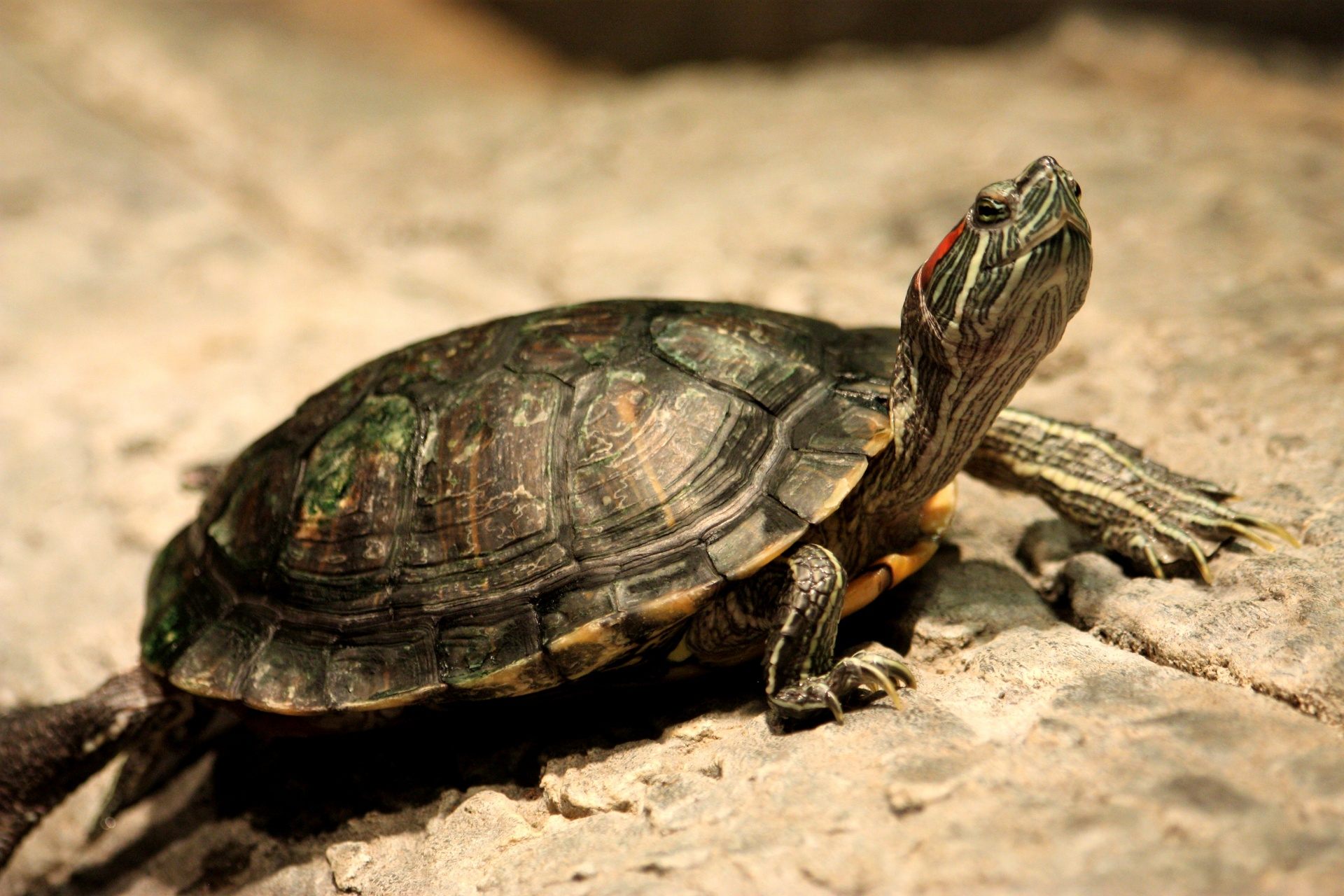Found: A 5.5-Million-Year-Old Ancestor of the Red-Eared Slider
The ancient relative of a popular (but invasive) pet.

We have the Teenage Mutant Ninja Turtles to thank, in part, for the ubiquity of red-eared sliders, freshwater terrapins native to North America. The sewer-dwelling characters made the pond-dwelling chelonians popular as pets around the world. So popular, in fact, that they have become one of the most invasive reptile species around, leading several countries in Europe, Asia, and Central America to take steps to protect their own turtle species against the semi-aquatic invaders.
Now a recently discovered fossil of an ancient relative of red-eared sliders might help scientists learn more about why these creatures are so adaptable. Steven Jasinski, a doctoral student at the University of Pennsylvania, found the fossilized remains of the newly identified Trachemys haugrudi at the Gray Fossil Site, a sinkhole in eastern Tennessee in which dozens of fossils—from a red panda to a mastodon—have been found.

It is not uncommon to find fossilized turtle shells, but they are usually broken, which makes identification a challenge. But in this case, the remains, dating to the end of the Miocene, 5.5 million years ago, are pleasingly numerous and intact. “It is extremely rare to get more complete fossils,” the paleontologist said in a release, “but Trachemys haugrudi, commonly called Haugrud’s slider turtle [for a manager at the site], provides me with dozens of shells, and several are nearly complete.”
Haugrud’s slider grew to as long as 10 inches, smaller than red-eared sliders, which can reach 16 inches from front to back (part of the reason some owners release them into the wild). Jasinski’s findings, which were published this month in the journal PeerJ, indicate that there was once greater diversity of Trachemys turtles compared with today, suggesting that some species could not adapt to changing environments—perhaps leaving the more versatile varieties. “While Trachemys turtle species are considered plastic, implying they can adapt to and live in many environments, this adaptive lifestyle may be a relatively newer characteristic of these turtles,” Jasinski said. “More fossils are needed to better understand if this aspect of their evolution is a recent addition.”








Follow us on Twitter to get the latest on the world's hidden wonders.
Like us on Facebook to get the latest on the world's hidden wonders.
Follow us on Twitter Like us on Facebook